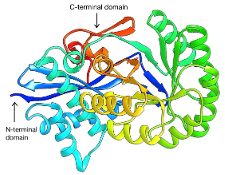VOLUME 17 (Supplement)

SciEnggJ 17 (Supplement) 558-573
available online: 31 December 2024
DOI: https://doi.org/10.54645/202417SupYHV-52
*Corresponding author
Email Address: mlirio@feu.edu.ph
Date received: 08 January 2024
Date revised: 05 October 2024
Date accepted: 26 October 2024
ARTICLE
Structure, biological, and paralysis mechanism differences between neurotoxins of Clostridium botulinum and Clostridium tetani
Nursing, Department of Medical Technology, Nicanor Reyes Sr.
Street, Sampaloc, Manila, 1008 Metro Manila, Philippines
Clostridium is the genus of spore-forming, mostly anaerobic soil or intestinal, bacteria. The bacteria produce many toxins linked to various conditions in humans and wildlife. Clostridium botulinum and Clostridium tetani are bacteria that produce neurotoxins that cause paralysis, an uncommon and untreatable disease. While sharing certain common chracteristics, these bacteria exhibit distinct differences in their structures and functions, particularly the impact of their neurotoxic properties. Hence, this study compares the paralysis mechanisms induced by Clostridium botulinum (BoNT) and Clostridium tetani (TeNT). To differentiate, the researchers used protein sequencing analysis to identify crucial amino acid residues that impact alterations in toxicity, selectivity, and mode of action. Additionally, the researchers utilized protein sequence retrieval and proteomics techniques by accessing the National Centre for Biotechnology Information (NCBI) database. BAP25804 and AAK72964 are the sequences for Clostridium botulinum and Clostridium tetani, respectively; these sequences have N-terminal extremities containing the entire spectrum of amino acids, making them useful for analysis. Additionally, the investigation demonstrated that both neurotoxins exhibit moderate hydrophilicity, with values of -0.416 (for BoNT) and -0.364 (for TeNT). The analysis of neurotoxins' localization within the cytoplasm has demonstrated that BoNT lacks both cytoplasmic and cell wall activity, in contrast to TeNT. This determination has enabled researchers to figure out these particular manifestations. Thus, it was revealed that BoNT inhibits neuromuscular transmission, whereas TeNT causes excessive acetylcholine release, which causes flaccid and spastic paralysis, respectively. Consequently, using a pool of predicted antigenic peptides, the researchers scrutinize the more significant presence of antigenic sites in TeNT compared to BoNT. This study solely provides an overview of the two Clostridium species. Recognizing the distinctiveness of these findings will give more evidence for treating several illnesses, and potential investigators will gain from utilizing the research findings as a cornerstone and point of comparison to go beyond the constraints.
© 2025 SciEnggJ
Philippine-American Academy of Science and Engineering